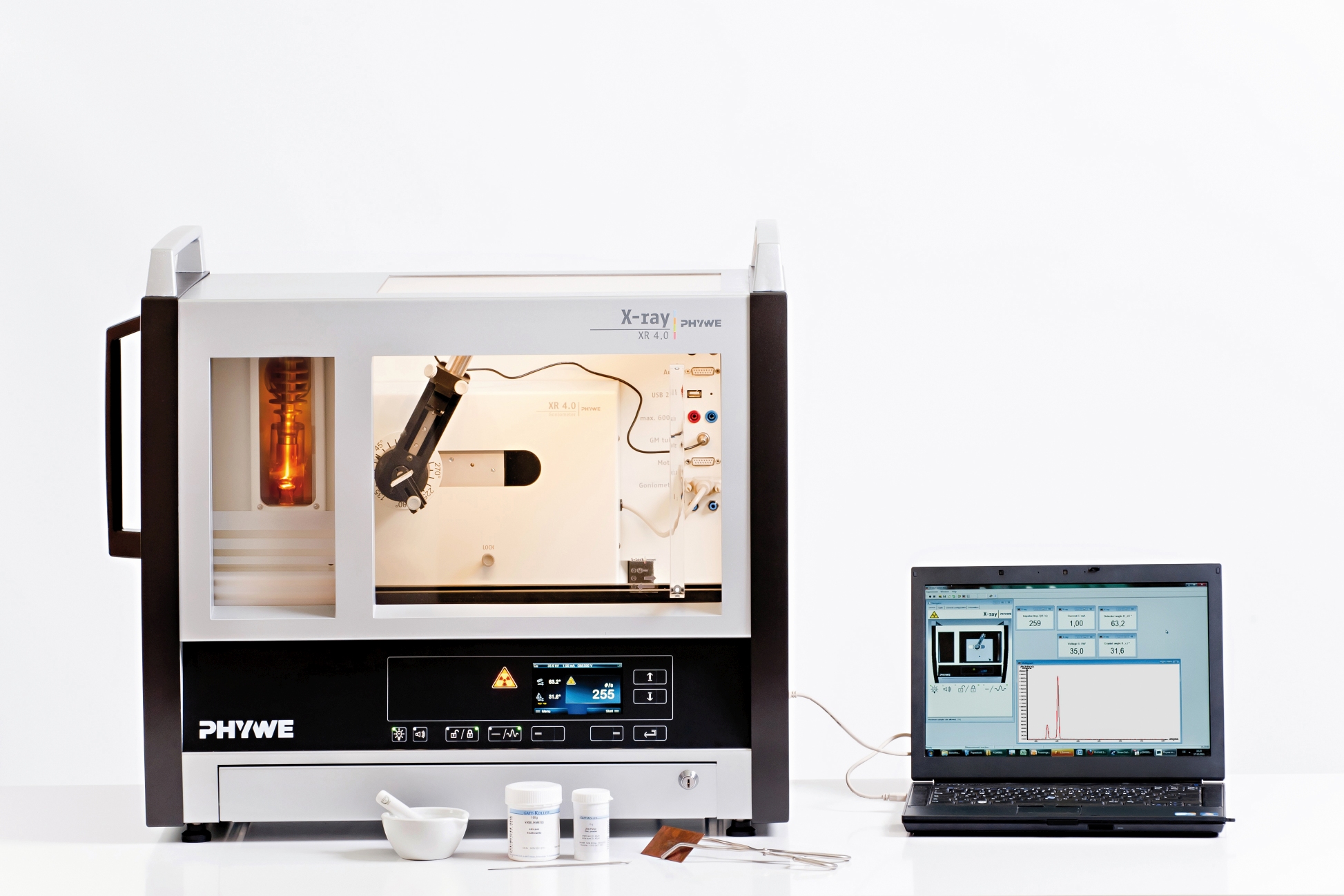Principle
A polycrystalline, cubic face-centered crystallizing copper powder sample and a thin copper sheet are separately irradiated with the radiation from a Roentgen tube with a copper anode. A Geiger-Mueller counter tube is automatically swivelled to detect the radiation that is constructively reflected from the various lattice planes of the crystallites. The Bragg diagrams are automatically recorded. The evaluation allows the Bragg reflexes to be assigned to the individual lattice planes. In contrast to the powder sample, the rolled thin sheet gives a spectrum showing an alignment of the crystallites (rolled texture), that is made even more complete by heating the sheet.
Tasks
- Record the intensity of the Cu X-rays back scattered by a cubic crystallizing copper powder sample as a function of the scattering angle.
- Assign the Bragg reflexes to the individual lattice planes.
- Record the Bragg spectrum of a thin sheet of copper.
- Repeat the measurements made in Task 3 after the sheet of copper has been subjected to annealing.
Learning objectives
- Crystal lattices
- Crystal systems
- Bravais-lattice
- Reciprocal lattice
- Miller indices
- Structure factor
- Atomic scattering factor
- Bragg scattering
- Characteristic X-rays
- Monochromatization of X-rays
- Fiber textures
- Sheet textures
- Annealing texture
- Recrystallization

